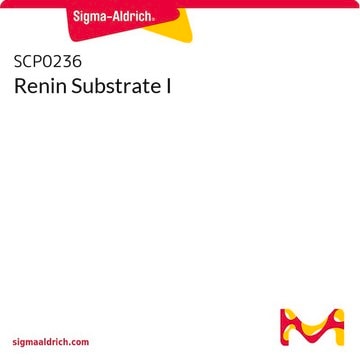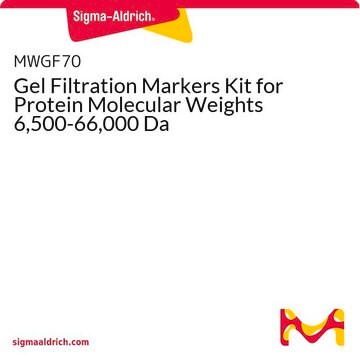Y0001154
Aprotinin for system suitability
European Pharmacopoeia (EP) Reference Standard
Synonim(y):
Aprotinin
Zaloguj sięWyświetlanie cen organizacyjnych i kontraktowych
About This Item
Polecane produkty
klasa czystości
pharmaceutical primary standard
rodzina API
aprotinin
producent / nazwa handlowa
EDQM
Zastosowanie
pharmaceutical (small molecule)
format
neat
temp. przechowywania
2-8°C
Opis ogólny
This product is provided as delivered and specified by the issuing Pharmacopoeia. All information provided in support of this product, including SDS and any product information leaflets have been developed and issued under the Authority of the issuing Pharmacopoeia.For further information and support please go to the website of the issuing Pharmacopoeia.
Zastosowanie
Aprotinin for system suitability EP Reference standard, intended for use in laboratory tests only as specifically prescribed in the European Pharmacopoeia.
Opakowanie
The product is delivered as supplied by the issuing Pharmacopoeia. For the current unit quantity, please visit the EDQM reference substance catalogue.
Inne uwagi
Sales restrictions may apply.
This page may contain text that has been machine translated.
produkt powiązany
Numer produktu
Opis
Cennik
Kod klasy składowania
11 - Combustible Solids
Klasa zagrożenia wodnego (WGK)
WGK 1
Temperatura zapłonu (°F)
Not applicable
Temperatura zapłonu (°C)
Not applicable
Choose from one of the most recent versions:
Certyfikaty analizy (CoA)
Lot/Batch Number
Sorry, we don't have COAs for this product available online at this time.
If you need assistance, please contact Obsługa Klienta
Masz już ten produkt?
Dokumenty związane z niedawno zakupionymi produktami zostały zamieszczone w Bibliotece dokumentów.
Klienci oglądali również te produkty
Regulatory decisions pertaining to aprotinin may be putting patients at risk.
Paul C Hébert et al.
CMAJ : Canadian Medical Association journal = journal de l'Association medicale canadienne, 186(18), 1379-1386 (2014-10-01)
Ulrich Weininger et al.
Biochemistry, 53(28), 4519-4525 (2014-07-02)
Intramolecular motions of proteins are critical for biological function. Transient structural fluctuations underlie a wide range of processes, including enzyme catalysis, ligand binding to buried sites, and generic protein motions, such as 180° rotation of aromatic side chains in the
D Royston
Anaesthesia, 70 Suppl 1, 46-49 (2014-12-03)
There is a considerable difference between the mechanism of action of the lysine analogues, tranexamic acid and epsilon-aminocaproic acid, and the serine protease inhibitor aprotinin. Aprotinin acts to inactivate free plasmin, but with little effect on bound plasmin, whereas the
Philippe Leroux et al.
Journal of neuropathology and experimental neurology, 73(5), 387-402 (2014-04-09)
Intracerebral-intraventricular hemorrhages (ICH/IVH) in very preterm neonates are responsible for high mortality and subsequent disabilities. In humans, tissue plasminogen activator (t-PA) initiates fibrinolysis and activates endoluminal-endothelial receptors; dysfunction of the t-PA inhibitor (PAI-1) results in recurrent hemorrhages. We used PAI-1
Reduction in serine protease activity correlates with improved rosacea severity in a small, randomized pilot study of a topical serine protease inhibitor.
Aimee M Two et al.
The Journal of investigative dermatology, 134(4), 1143-1145 (2013-11-12)
Nasz zespół naukowców ma doświadczenie we wszystkich obszarach badań, w tym w naukach przyrodniczych, materiałoznawstwie, syntezie chemicznej, chromatografii, analityce i wielu innych dziedzinach.
Skontaktuj się z zespołem ds. pomocy technicznej











